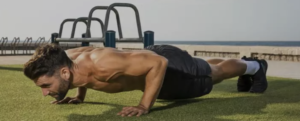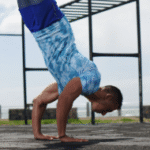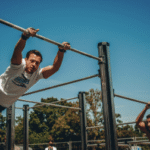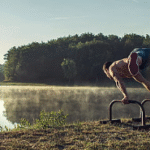Squats 101: Perfect Your Form & Build Lower Body Strength
The squat: a fundamental movement pattern, a cornerstone of strength training, and a powerhouse exercise for building lower body strength and overall fitness. This guide will take you from squat novice to squat master, ensuring proper form and maximizing your results.
Why Master the Squat?
Functional Movement: Squatting is a natural human movement essential for everyday activities like sitting, standing, and lifting.
Lower Body Powerhouse: Works your quads, glutes, hamstrings, and calves, building strength and muscle mass.
Core Engagement: Engages your core muscles for stability and balance.
Improved Mobility: Increases hip and ankle mobility.
Hormonal Boost: Stimulates the release of anabolic hormones, promoting muscle growth and overall health.
Versatile Exercise: Can be performed with bodyweight or added resistance (dumbbells, barbells, resistance bands).
Step 1: Master the Bodyweight Squat
Perfect Your Form:
Stance: Feet shoulder-width apart, toes slightly outward.
Alignment: Keep your back straight, chest up, and core engaged.
Movement: Initiate the squat by pushing your hips back as if sitting in a chair. Lower your hips until your thighs are parallel to the ground or lower, keeping your knees aligned with your toes.
Drive Up: Push through your heels to return to the starting position, extending your hips and knees fully.
Common Mistakes:
Knee Cave-In: Push your knees outward to prevent them from collapsing inward.
Rounding Your Back: Maintain a neutral spine throughout the movement.
Heels Lifting: Keep your heels flat on the ground. If you struggle, improve ankle mobility.
Step 2: Add Variations and Progressions
Goblet Squat: Hold a weight (dumbbell or kettlebell) in front of your chest.
Front Squat: Position a barbell across your collarbone and front shoulders.
Back Squat: Rest a barbell across your upper back.
Bulgarian Split Squat: Elevate your rear foot on a bench and perform a single-leg squat.
Jump Squat: Explosively jump upward at the top of the squat.
Step 3: Focus on Mobility and Flexibility
Ankle Mobility: Improve ankle flexibility with stretches and exercises like calf raises and ankle rotations.
Hip Mobility: Increase hip mobility with stretches like hip flexor stretches and pigeon pose.
Thoracic Mobility: Improve upper back mobility with stretches like cat-cow and thoracic rotations.
Tips for Success:
Start Light: Begin with bodyweight squats and gradually add weight or resistance as you get stronger.
Prioritize Form: Focus on maintaining proper form throughout the entire movement.
Warm-Up: Prepare your body with dynamic stretches and light cardio before squatting.
Listen to Your Body: Rest when needed and address any pain or discomfort.
Consistency is Key: Squat regularly to see consistent progress.
Bonus Resources:
YouTube Tutorials: Search for “squat tutorials” or “how to squat with proper form” on YouTube.
Strength Training Guides: Consult strength training guides or books for detailed information on squat variations and progressions.
Certified Trainers: Consider working with a certified strength and conditioning coach for personalized guidance and feedback.
By mastering the squat, you’ll unlock a world of lower body strength, improved athleticism, and overall fitness. So, embrace the squat and experience the transformative power of this fundamental exercise!

Squats 101: Perfect Your Form & Build Lower Body Strength
Route
Calisthenics Gym Houston Functional Bodyweight Training
Secondary phone: (346) 483-3195
Email: info@calisthenicsclubhouston.com
URL: https://calisthenicsclubhouston.com/
Monday 6:00 AM - 7:00 PM Tuesday 6:00 AM - 7:00 PM Wednesday 6:00 AM - 7:00 PM Thursday 6:00 AM - 7:00 PM Friday 12:00 PM - 6:30 PM Saturday 9:45 AM - 12:00 PM Sunday 3:00 PM - 5:00 PM





